
The Bromeliaceae are a family of monocot flowering plants of about 80 genera and 3700 known species, native mainly to the tropical Americas, with several species found in the American subtropics and one in tropical west Africa, Pitcairnia feliciana.
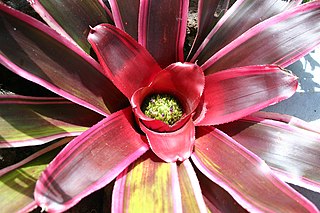
Neoregelia is a genus of epiphytic flowering plants in the family Bromeliaceae, subfamily Bromelioideae, native to South American rainforests. The genus name is for Eduard August von Regel, Director of St. Petersburg Botanic Gardens in Russia (1875–1892).

Vriesea is a genus of flowering plants in the botanical family Bromeliaceae, subfamily Tillandsioideae. The genus name is for Willem Hendrik de Vriese, Dutch botanist, physician (1806–1862). Its species are widespread over Mexico, Central America, South America and the West Indies.
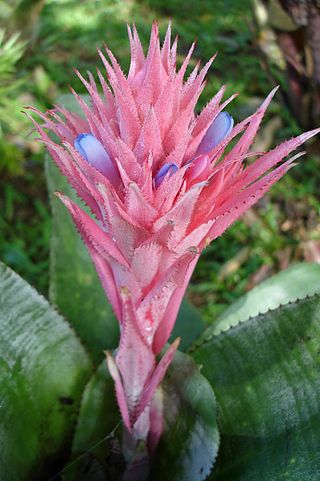
Aechmea is a genus of flowering plants in the family Bromeliaceae. The name comes from the Greek aichme, meaning "spear". Suggested pronunciations include EEK-me-ə and eek-MEE-ə. Aechmea comprises eight subgenera and around 250 species distributed from Mexico through South America and the Caribbean. Most of the species in this genus are epiphytes.

Araeococcus is a genus of the botanical family Bromeliaceae, subfamily Bromelioideae. It is native to northern South America, Central America and Trinidad.

Canistrum is a genus of plants in the family Bromeliaceae, subfamily Bromelioideae.

Cryptanthus is a genus of flowering plants in the family Bromeliaceae, subfamily Bromelioideae. The genus name is from the Greek cryptos (hidden) and anthos (flower). The genus formerly had two recognized subgenera: the type subgenus and subgenus HoplocryptanthusMez which has been raised to the separate genus Hoplocryptanthus. All species of this genus are endemic to Brazil. The common name for any Cryptanthus is "Earth star".

Wittmackia is a genus of flowering plants in the family Bromeliaceae.

Orthophytum is a genus in the plant family Bromeliaceae, subfamily Bromelioideae.
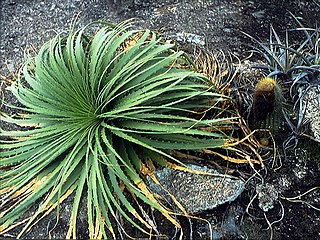
Encholirium is a genus of plants in the family Bromeliaceae, subfamily Pitcairnioideae. The entire genus is endemic to Brazil. The genus name is from the Greek “enchos” (spear) and “leiron” (lily).

Hohenbergia is a genus of plants in the family Bromeliaceae, subfamily Bromelioideae. It is native to the West Indies, the Yucatán Peninsula, and northern South America.

Tillandsia subg. Anoplophytum is a subgenus of the genus Tillandsia.
Pseudaraeococcus montanus is a species of flowering plant in the family Bromeliaceae, endemic to Brazil. It was first described in 1999 as Araeococcus montanus.
Pseudaraeococcus nigropurpureus is a species of flowering plant in the family Bromeliaceae, endemic to Brazil. It was first described in 2007 as Araeococcus nigropurpureus.
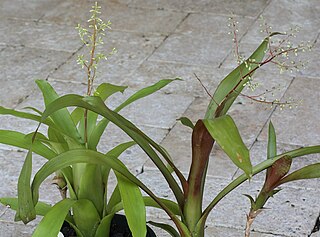
Pseudaraeococcus parviflorus is a species of flowering plant in the family Bromeliaceae, endemic to Brazil. It was first described in 1830 as Billbergia parviflora.
Pseudaraeococcus sessiliflorus is a species of flowering plant in the family Bromeliaceae, endemic to Brazil. It was first described in 2007 as Araeococcus sessiliflorus.
Neoregelia silvimontana is a species of flowering plant in the genus Neoregelia. This species is endemic to Brazil. Its name has also been spelt Neoregelia silvomontana.
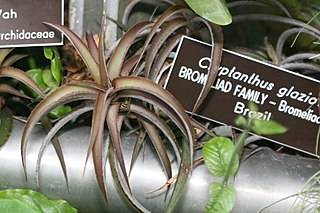
Hoplocryptanthus is a genus of flowering plants belonging to the family Bromeliaceae. It was formerly treated as the subgenus Hoplocryptanthus of the genus Cryptanthus.

Karawata is a genus of flowering plant in the family Bromeliaceae, native to eastern Brazil. The genus was first described in 2019.














